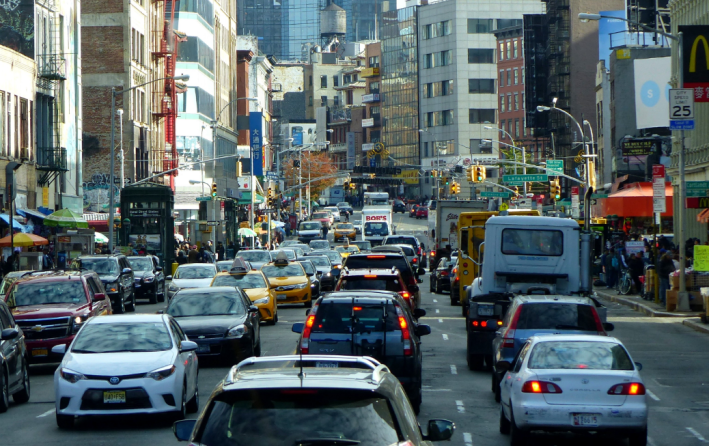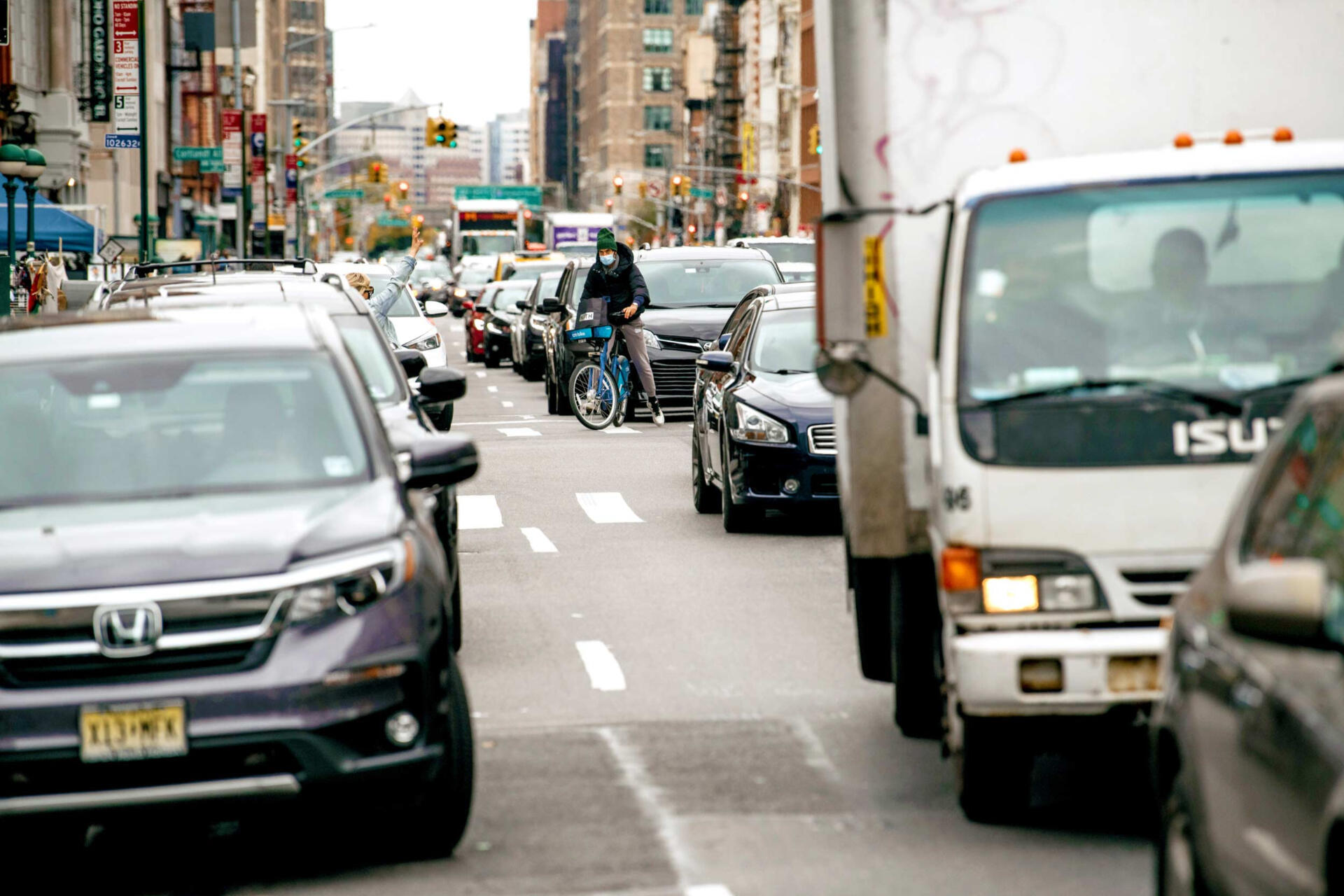Vision Zero? How about Vision 25 by 25?
A coalition of safe-street advocates are calling on all mayoral candidates to commit to giving streets back to the people, by transforming at least a quarter of the space that's currently dedicated to private cars into public space by 2025.
“We’re ultimately trying to get equity on our streets. We built the city around the automobile to disastrous results,” said Transportation Alternatives Executive Director Danny Harris. “Our challenge for incoming leaders is to think about the incredible success in minor street transformations and scale that across the entire city.”
The vision, called "NYC 25 by 25," has the backing of more than 80 organizations, including the 34th Avenue Open Streets Coalition, 89th Street Tenants Unidos Association in Jackson Heights, Bedford-Stuyvesant Restoration Corporation, Families for Safe Streets, La Colmena, Pakistani-American Youth Society, the Street Vendor Project at the Urban Justice Center, Tri-State Transportation Committee, and Bike NY.
And together, they’re asking mayoral candidates to reimagine 25 percent of the space currently allocated for vehicles — including 19,000 miles of travel lanes and three million on-street parking spaces — as public space within four years to create a healthier New York that puts people above cars, especially as the city recovers from the COVID-19 pandemic, a health crisis that shined a light on the city's unequal access to transportation and green space.
Using data from the Department of Transportation and Department of Information Technology and Telecommunications, TA calculated that space dedicated to vehicles across the five boroughs comprises 76 percent, leaving just about 24 percent for people — despite more than half of households not owning a car.
Vehicle lanes make up 54.2 percent of the streetscape; sidewalks just 23.74 percent; bike lanes a meager 0.93 percent, and dedicated bus lanes a tiny 0.02 percent, according to TA’s bombshell report — percentages that are more than just numbers, but actually harm New Yorkers by causing traffic-clogged streets that contribute to $6 billion a year in traffic crashes and lost time, air pollution and worsening asthma rates, and more young people being injured and killed.

TA laid out one alternative to what the city could do with 25 percent of its space that’s right now just used for cars, and it features:
- 500 lane miles of dedicated bus lanes
- 500 lane miles of protected bike lanes
- 40 lane miles of busways
- 38 million square feet of open space such as pedestrian plazas, curbside parklets, and community gardens
- 1,000 lane miles of permanent Open Streets
- 5.4 million square feet of space for arts and cultural venues, restaurant seating, street vendors, retail, and other uses to bolster economic recovery
- 2.9 million square feet of expanded pedestrian space to make room for public restrooms, street vendors, bike parking, and bus shelters
- One-block-long car-free multi-use space for play, student drop-off and pick-up, and outdoor learning outside each of New York City’s 1,700 public school buildings.
- 19.4 million square feet of bike parking spaces.
And after all that, there’s even still room for car parking — 780,000 spaces for car-share parking and paid parking spaces, which would be converted from free parking, and which TA says would have the potential to generate at least $1 billion annually.
And the vision is about more than just installing a bike lane here, or a bus lane there — it’s about creating a comprehensive approach to reimagining public space that not only helps make the city healthier and safer, but also helps people move around and get to where they need to go.
“Our challenge to them is we’re not looking for a single approach on bike lanes or bus lanes, but we’re looking for how to reclaim street space in support of climate change and equity," said Harris.
The candidates must be willing to think about access to transportation and public space holistically, like how Mayor de Blasio's refusal to ban cars in front of schools is an education issue as much as it is a safe-streets issue, according to Harris.
“We want to make sure they’re thinking about this across all issues, like school. How are kids gonna get to school? And COVID, how are healthcare workers getting to and from work? These need to be embedded across everything," he said. "We’re not talking about bikes and buses, we’re talking about public health, environmental justice, transportation justice, and creating a city that will continue to be wonderful and thriving for generation to come because we prioritized people not cars.”
A few of the candidates vying to replace de Blasio — who put Vision Zero on the city agenda, but ultimately has a mixed record of protecting New York's most vulnerable road users — have already laid out robust plans to expand public space with additional bus and bike lanes and pedestrian plazas, but none so far are as bold to commit to turning 25 percent of street space into public space by 2025.
Streetsblog will follow up with the candidates after the Transportation Alternatives plan is released today.







